Hi Guys,
I've got another Work Hawk ready to go. The original idea for this hawk started a few years ago when I began investigating the concept of a single tool for backpacking and bushcraft. There are quite a few "tactical" tomahawks around, but I was always shocked to see that they were so heavy, not usually ground for chopping wood so much as people/tanks/helicopters, and generally unwieldy for normal outdoor use. I wanted to get as much chopping power into a 1lb tool as possible without sacrificing the ability to do all of the basic camp chores and more or muddying the design into a gimmicky survival tool. Eventually, the Work Hawk was born.
The tomahawk for sale today has a "natural" canvas micarta handle which brings the weight up to 22.5oz. This is the first Work Hawk with the handle scales only bolted on. If you're really worried about weight, you can remove the scales and do a paracord wrap, which pits the weight right around 17oz. The 52100 easily takes a hair popping edge. I stole the octagonalized handle from working axes used through the 19th and early 20th centuries. The handle is gently curved for an ideal position for powerful chopping. The slight beard and hole in the head allow you to choke up and cut with finesse. If you've never carved wood with a small, sharp axe, you're missing out! I'm thinking of putting a video together to showcase the Work Hawk and do some different cutting tasks. If that's something you'd be interested in seeing, let me know!
The Work Hawk is a blast to use for it's intended purposes, which means processing wood (even game) in a number of ways. It is not intended for concrete chopping, safe-breaching, etc.
-Aldo's 52100, .25"
-Sandblasted finish
-57-58RC bit and poll, spring tempered (47RC) tang
-Peter's Heat Treat
-Structurally skeletonized tang (see CAD file picture)
-Natural Canvas Micarta sanded @ 120 grit and waxed.
-Sharp!
-Chainring bolts
12.75" length, 3.9" bit to poll, 3.75" cutting edge
1" wide handle, .75" thick
This Work Hawk comes with the pictured kydex sheath.
Introductory price of $SPF via Paypal includes USPS Priority Mail to the CONUS. First "I'll take it" gets it.
You must be 18+ to purchase. You are responsible for compliance with your local laws.
Here is an image of the final CAD file for this design.
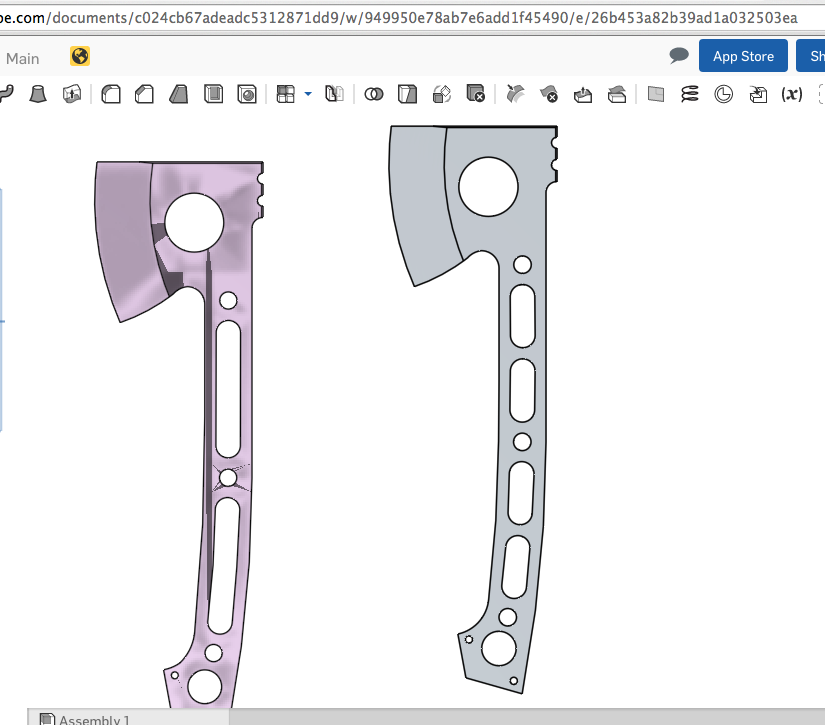

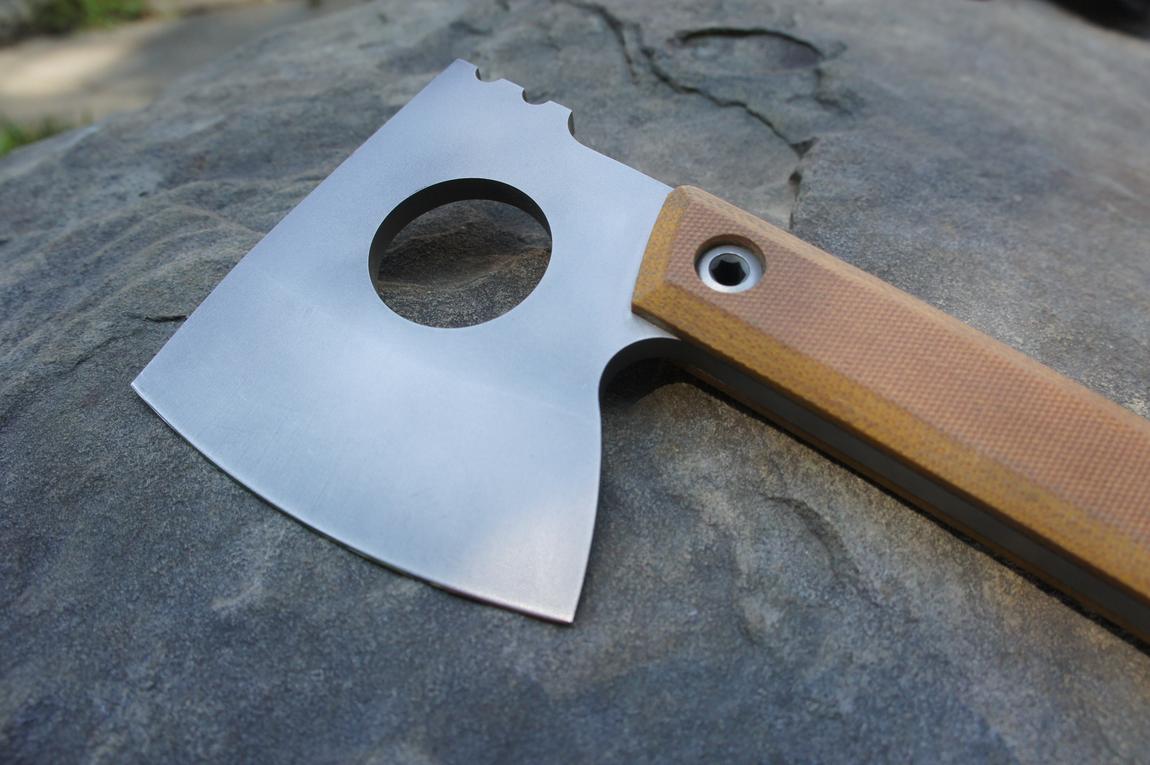
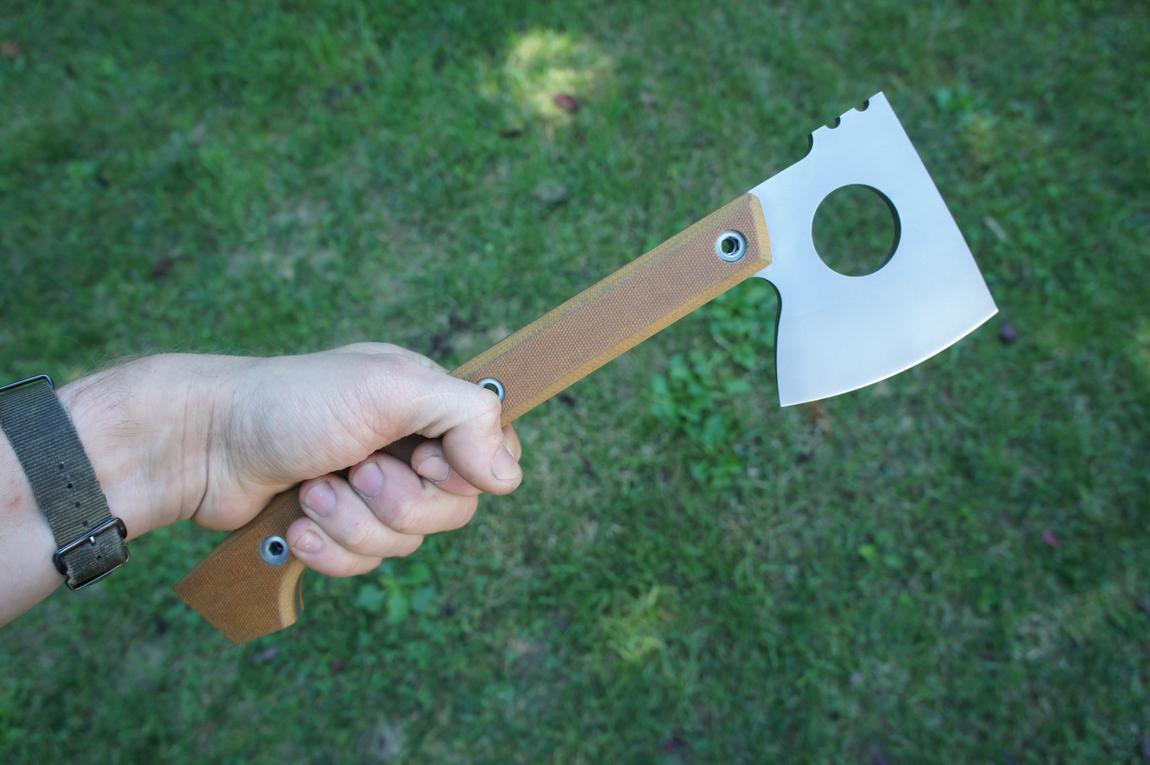
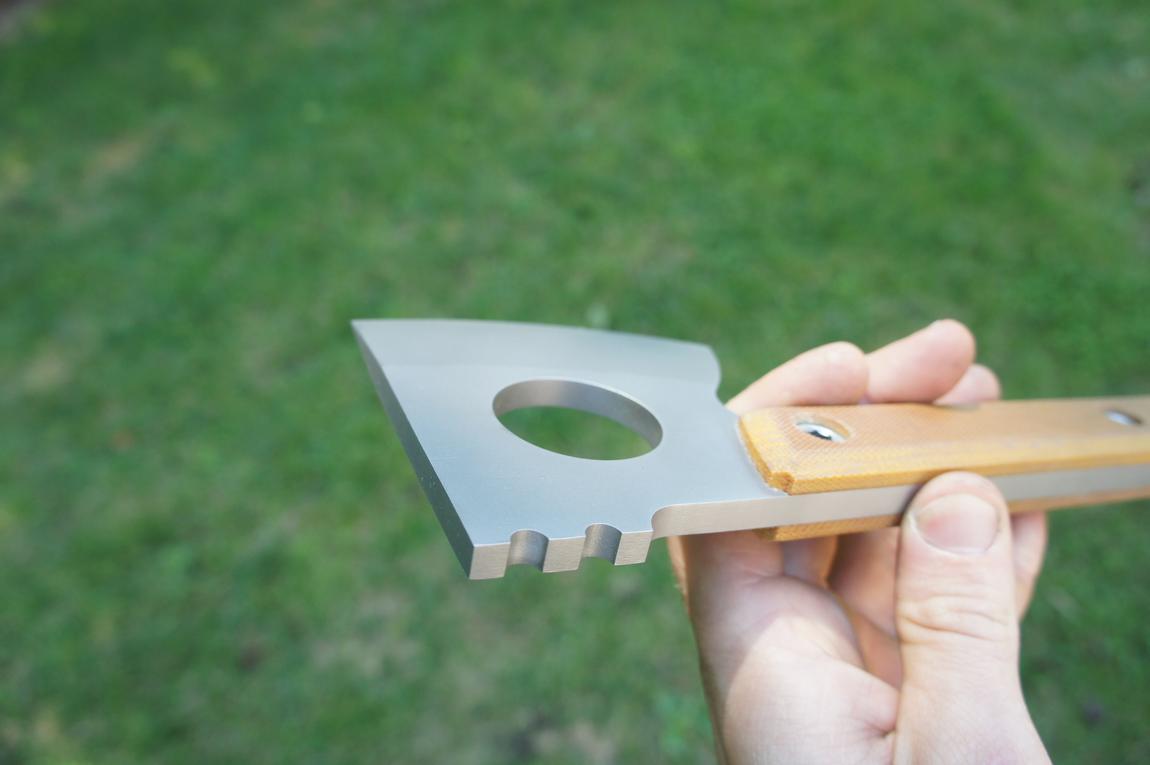
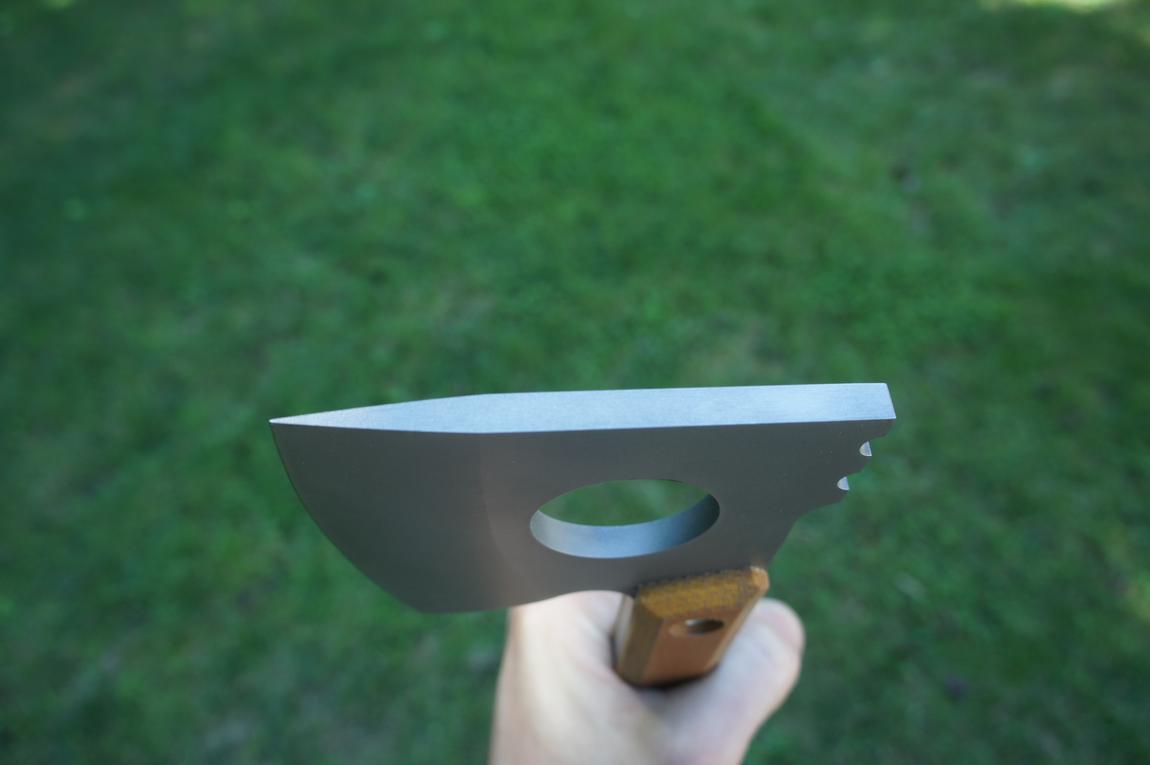
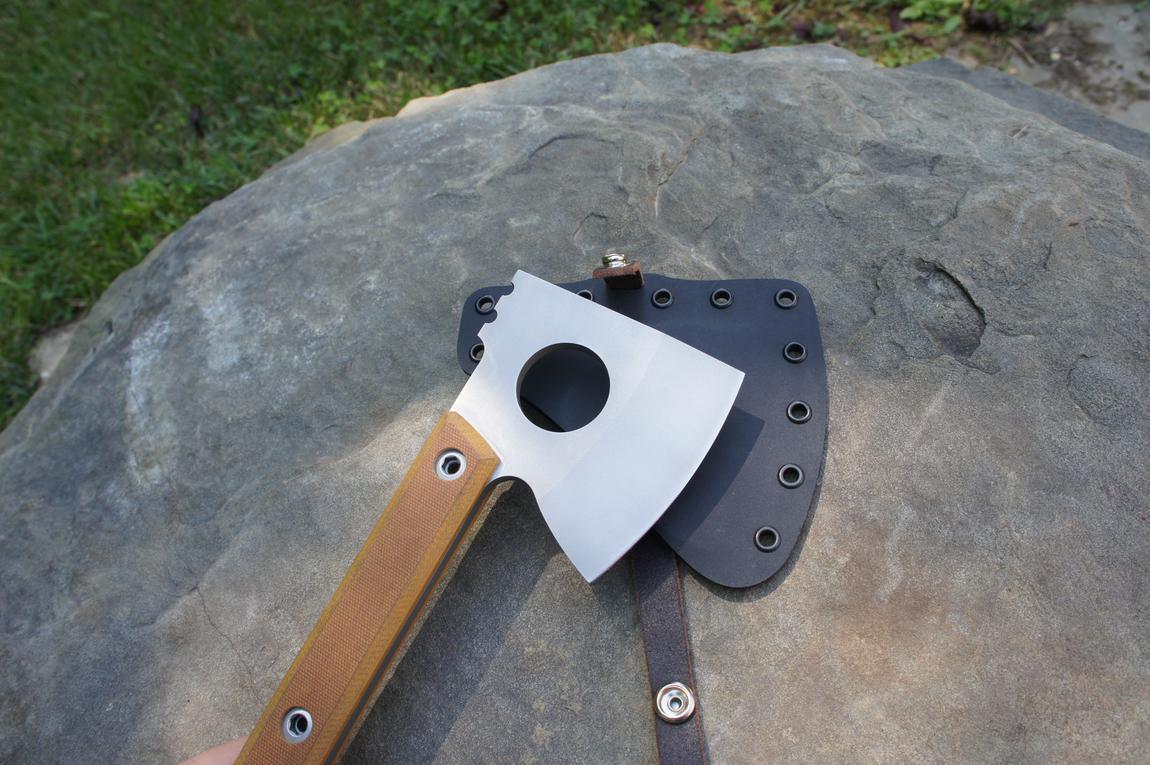
I just realized there are still pencil marks on the sheath in this shot. They're gone now; they erase right off.
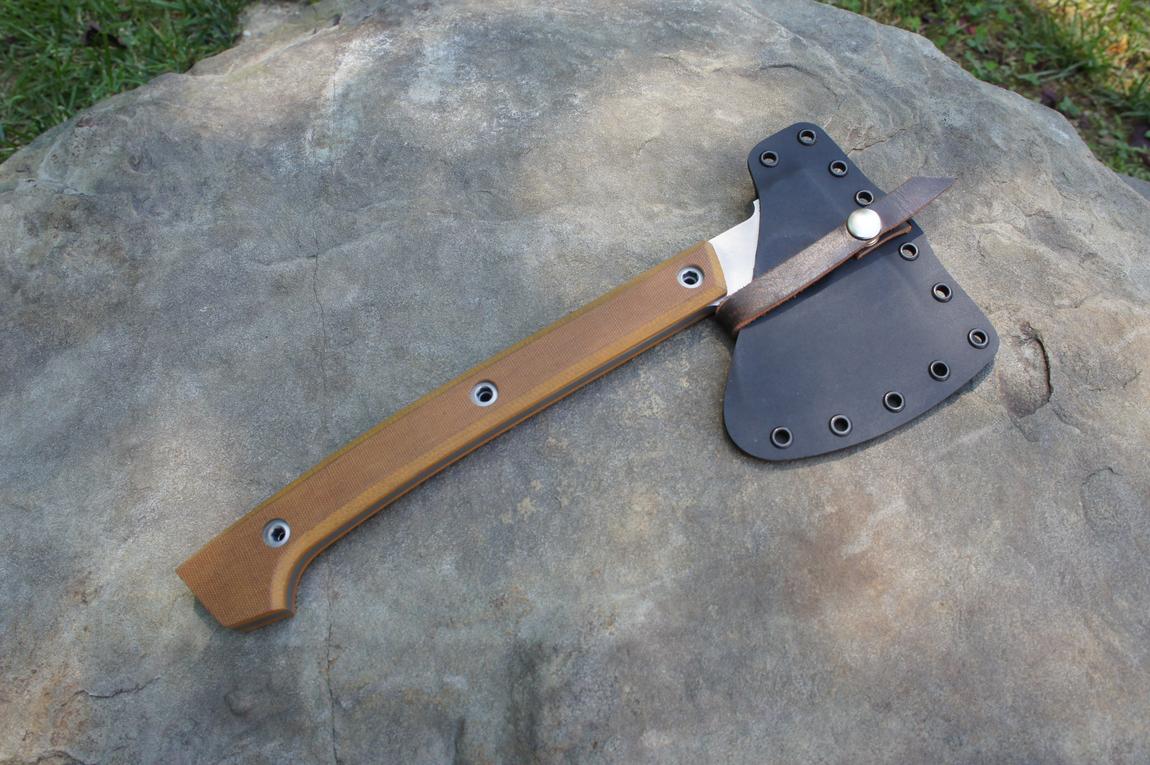

Thanks for looking! All feedback is welcome and appreciated.
I've got another Work Hawk ready to go. The original idea for this hawk started a few years ago when I began investigating the concept of a single tool for backpacking and bushcraft. There are quite a few "tactical" tomahawks around, but I was always shocked to see that they were so heavy, not usually ground for chopping wood so much as people/tanks/helicopters, and generally unwieldy for normal outdoor use. I wanted to get as much chopping power into a 1lb tool as possible without sacrificing the ability to do all of the basic camp chores and more or muddying the design into a gimmicky survival tool. Eventually, the Work Hawk was born.
The tomahawk for sale today has a "natural" canvas micarta handle which brings the weight up to 22.5oz. This is the first Work Hawk with the handle scales only bolted on. If you're really worried about weight, you can remove the scales and do a paracord wrap, which pits the weight right around 17oz. The 52100 easily takes a hair popping edge. I stole the octagonalized handle from working axes used through the 19th and early 20th centuries. The handle is gently curved for an ideal position for powerful chopping. The slight beard and hole in the head allow you to choke up and cut with finesse. If you've never carved wood with a small, sharp axe, you're missing out! I'm thinking of putting a video together to showcase the Work Hawk and do some different cutting tasks. If that's something you'd be interested in seeing, let me know!
The Work Hawk is a blast to use for it's intended purposes, which means processing wood (even game) in a number of ways. It is not intended for concrete chopping, safe-breaching, etc.
-Aldo's 52100, .25"
-Sandblasted finish
-57-58RC bit and poll, spring tempered (47RC) tang
-Peter's Heat Treat
-Structurally skeletonized tang (see CAD file picture)
-Natural Canvas Micarta sanded @ 120 grit and waxed.
-Sharp!
-Chainring bolts
12.75" length, 3.9" bit to poll, 3.75" cutting edge
1" wide handle, .75" thick
This Work Hawk comes with the pictured kydex sheath.
Introductory price of $SPF via Paypal includes USPS Priority Mail to the CONUS. First "I'll take it" gets it.
You must be 18+ to purchase. You are responsible for compliance with your local laws.
Here is an image of the final CAD file for this design.







I just realized there are still pencil marks on the sheath in this shot. They're gone now; they erase right off.


Thanks for looking! All feedback is welcome and appreciated.
Last edited:
